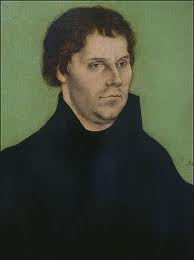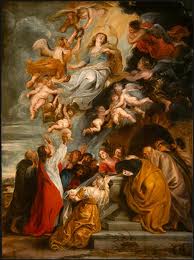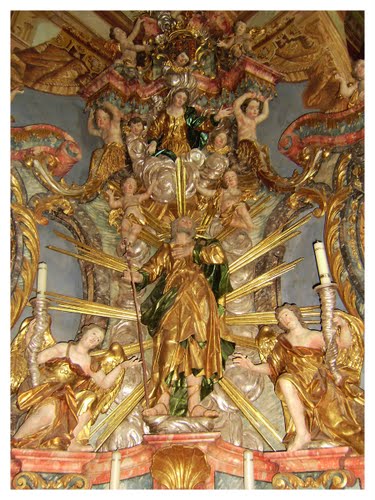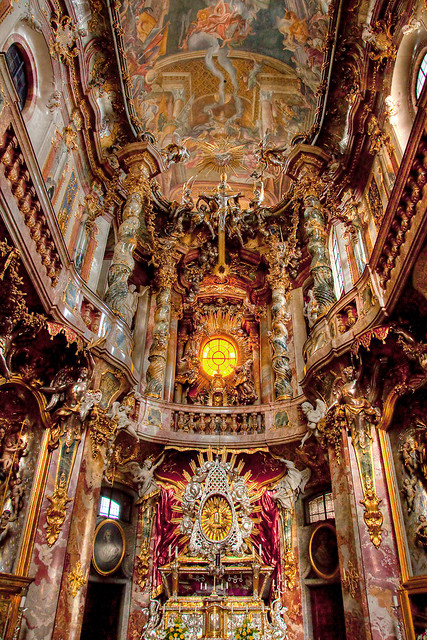Reformation
Counter-Reformation
Several monks, notably Arnoldo di Brescia, had previously challenged the Church’s temporal wealth but the event that triggered the Reformation was a long thesis written by Martin Luther, a young Augustine monk from Germany, to his superior. On top of his list of grievances was the way Pope Leo X, to pay for building expenses in the Vatican, sold “indulgences” for a better chance to get to heaven.
The thesis was copied - the printer had been invented around this time - and passed along. We don't know for sure if Luther published it himself or whether it was done without his knowledge. The fact is the timing was right; his words reflected what people were thinking, that the Church was not following the true teachings of Christ. Predictably the pope sent Luther an official letter of excommunication, which the young man publicly burned. By 1550 news of Luther’s righteous condemnation had spread throughout Europe with over 300,000 copies translated into several languages. People who adhered to his ideas were called protesters, or Protestants, and they grew more numerous by the day.
The countries in northern Europe had been searching for a way to disengage themselves from the popes in Rome and the outspoken Augustine monk was an unexpected window of opportunity. The leaders of the north united with Luther, broke from papal domination and overtook the Church’s territories. Predictably the protestant movement got caught in the political web and ended being manipulated by the upper middle-class, the bourgeoisie particularly in the northern countries, to the detriment of the poor who were clueless.
Protestantism was eagerly embraced by the peasants in Germany who had heard traveling preachers speak of equality. Luther's movement was viewed as a divine message towards the social and political reform people had been fighting for. Anticipating an alliance the farmers started the Peasant’s War. Their requests included permission to choose their own pastors, the abolition of serfdom, the right to hunt and fish, restoration of common lands, impartiality of the courts, and just dues from the landlords. Their hopes were dashed when Luther sided with the aristocrats and merchants, and condemned the revolt. The war continued some time after but was totally crushed in 1526. In two years 100,000 men were killed.
The Counter-Reformation
The official rupture between the Catholics and the Protestants came in 1520, when the Church launched the Counter-Reformation or the "Catholic Reform". Luther’s thesis reflected the mounting anger and frustration of the Catholic community who wanted to see change without becoming Protestants. A group of clergy, led by bishops and intellectuals, wanted a complete review of Catholicism back to the true principles of Christ. They called themselves Reformists.
The first Reformist pope, Pope Paul III, was a member of a society called the Oratory of Divine Love, founded in Genova for charitable works. He established several religious orders whose role was to be in touch with the common people (one order being the Capuchins) and founded the Jesuit order with Ignatius Loyola. He initiated reforms within the Church with The Council of Trent, in an attempt to bring Protestants back to the fold. However the reforms were not popular with the higher spheres of Catholic clergy unwilling to give up the perks, and did not outlast the pope. In the meantime Catholics were flocking to Protestantism in such high numbers it looked like Catholicism was doomed to be the minority.
Once it was clear the lines had been drawn the Church counter-attacked with force with a mix of awe and terror. Artists and architects were put to task to create images and buildings that gave the illusion of grandeur.
Baroque art
By the 16th century people were truly fed up with the Popes' tyranic politics as well as the debauched lifestyle in the Vatican, but nobody could have predicted the chain of events following a letter of excommunication sent to Martin Luther concerning his list of complaints.
Three tendencies emerged from the Reformation: Lutherans, Calvinists and Anglicans.
The three groups rejected the cult of Mary and the Saints, eliminated Mass which Luther considered pagan and held to his (somewhat simplistic) interpretation of the Bible where Christians are not saved by their own efforts but through Faith. (Romans 1:17)
When the Pope denied Henry VIII his request for a divorce the English king saw the anti-Catholic trend as an opportunity to break ties with the Vatican. In 1534, in an "Act of Supremacy" he established the Anglican Church. The three tendencies never bonded.



